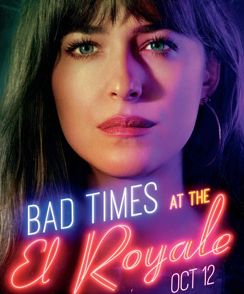“Bad Times at the El Royale:” Subverting Expectations With a Purpose

dakota
October 30, 2018
Drew Goddard does not like expectations. The writer and director of the 2011 horror film “Cabin in the Woods,” a film that subverts the expectations and clichés of the horror genre, proves the talented amateur’s ability as a filmmaker and visionary with his directorial debut, his screenplay for “The Martian,” and his work as the showrunner on Netflix’s “Daredevil.” However, it is his most recent release, a pulp-inspired, Quentin Tarantino-influenced story starring Chris Hemsworth and Jon Hamm that is perhaps his most thought-provoking work .
“Bad Times at the El Royale” starts in a hotel straddling the state lines of Nevada and California. From there, all it needs are the guests to fill its rooms, and thus a story is born. Each customer has his or her own story to tell, and as the night unfolds, each one is told. Of course, each character is not who they seem, nor does each story end the way one would expect.
This is where Goddard finds his niché as an artist, where he crafts his master idea. Starting with “Cabin in the Woods,” it was evident that Goddard wanted to challenge the notions of audience expectations, targeting what the audience anticipated and going in the opposite direction. While a clever storytelling device, this never amounted to anything other than an intriguing story and keeping audience engagement high.
“Bad Times at the El Royale,” however, uses expectations to make a comment on society, to challenge the way we think. Each swerve in character arcs, each turn the story takes all leads us to the eventual conclusion, all roads leading to the same place, the same point Goddard wants to make. In a world where politicians make outlandish claims and build cults of personality and where people hide behind Snapchat filters and Instagram accounts, Goddard challenges us to question what we see and look again.
No one is who they present themselves to be, and no one is who they seem. Our job, as is the job of the characters in the film, is to investigate others and uncover who they really are, to question appearances. Everyone shields themselves behind something, and Goddard is challenging us to move past these barriers and reveal the truth. His pointed commentary is further elevated and emphasized by the metaphor of the hotel itself: everyone has baggage.
Goddard’s film is entertaining, always tempting its audience members to think about the characters and question what they’re watching on screen. It is this reaction that he elicits that is his ultimate goal and what he hopes to convey through the story he puts on the screen. In a world where nothing is as it appears to be, we must take the baggage each person carries and open it. This is a compelling and fascinating idea intelligently explored through the metaphor of the “El Royale Hotel.”










